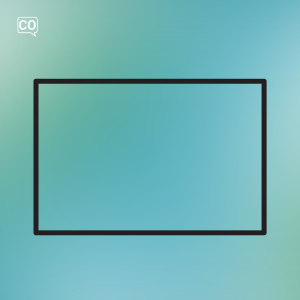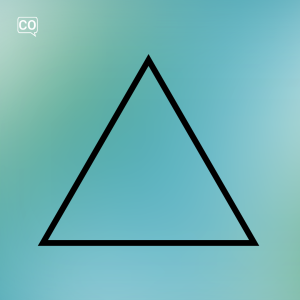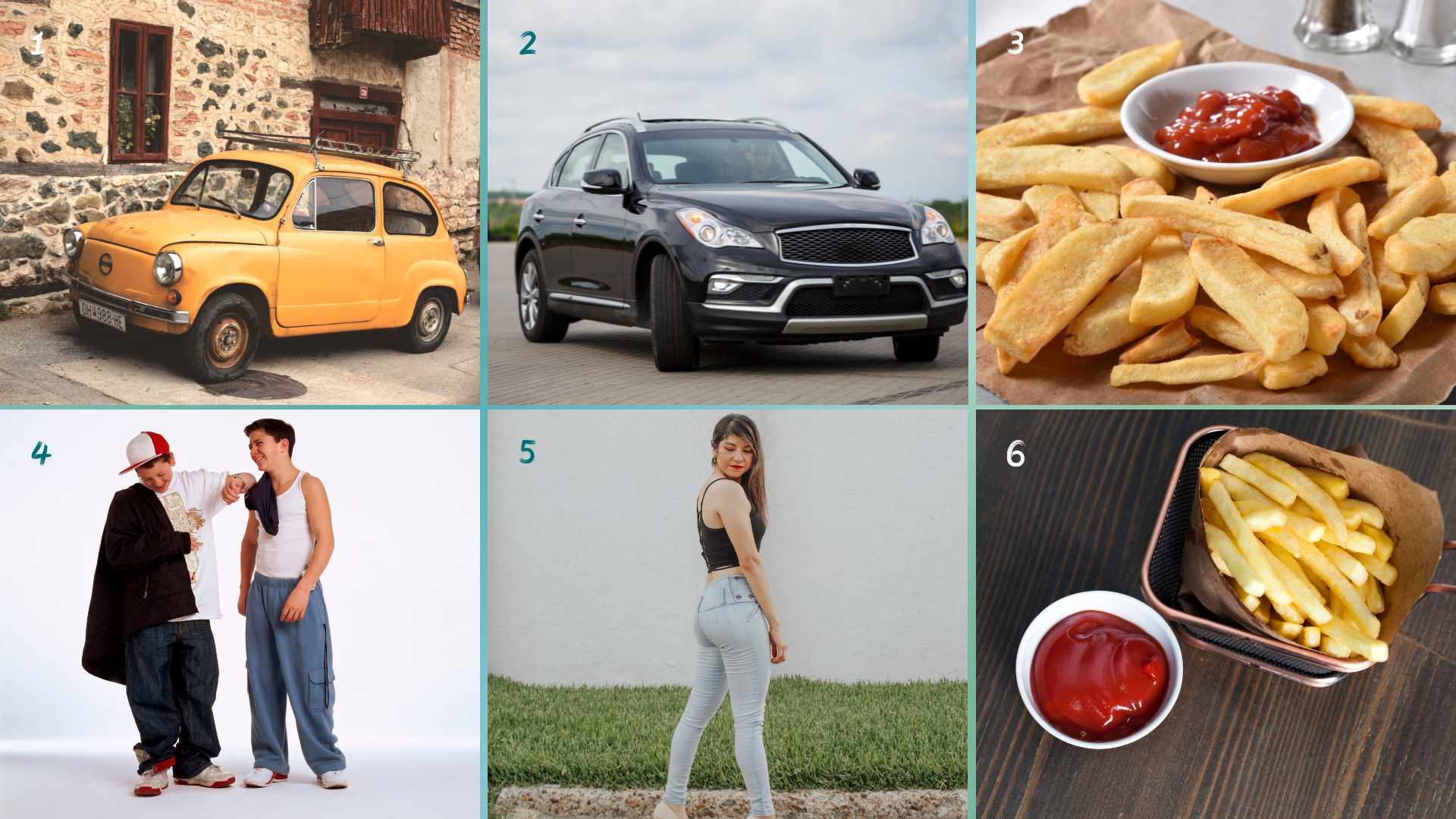Describe forms and shapes.
Describe basic objects.
Express preferences.
Simple negation
Learn French vocabulary and grammar related to shapes and forms. This lesson covers geometric shapes, simple negation, descriptive adjectives, conversational dialogues, and present tense verb conjugations to help you describe objects and express preferences naturally.
Listening & reading materials
Practice vocabulary in context with real materials.
A1.27.1 Lecture
The architecture of the National Assembly
Hide French
Show French
Hide English
Show English
These exercises can be done together during conversation lessons or as homework.
Exercise 1:
Reorder sentences
Instruction: Make correct sentences and translate.
Show answers
1.
je préfère | parce que | les fruits. | Je ne | de sucre | mange pas
Je ne mange pas de sucre parce que je préfère les fruits.
(I do not eat sugar because I prefer fruits.)
2.
? | Le cercle | arrondi que | est plus | n'est-ce pas | le carré,
Le cercle est plus arrondi que le carré, n'est-ce pas ?
(The circle is rounder than the square, isn't it?)
3.
portes pas | avec des | formes pointues | aujourd'hui. | Tu ne | de vêtements
Tu ne portes pas de vêtements avec des formes pointues aujourd'hui.
(You are not wearing clothes with sharp shapes today.)
4.
mais ce | est fin, | large. | Ce triangle | rectangle est
Ce triangle est fin, mais ce rectangle est large.
(This triangle is thin, but this rectangle is wide.)
5.
des cercles. | voyons pas | collection, seulement | dans cette | Nous ne | de losanges
Nous ne voyons pas de losanges dans cette collection, seulement des cercles.
(We do not see diamonds in this collection, only circles.)
6.
les formes douces. | dessin, elle préfère | pas de lignes | épaisses sur son | Elle ne veut
Elle ne veut pas de lignes épaisses sur son dessin, elle préfère les formes douces.
(She does not want thick lines on her drawing, she prefers soft shapes.)
Reset
Exercise 2:
Match a word
Instruction: Match the translations
Le triangle est pointu et facile à reconnaître.
(The triangle is sharp and easy to recognize.)
Je ne porte pas de vêtements étroits.
(I do not wear tight clothes.)
La table est large mais un peu basse.
(The table is wide but a bit low.)
Tu ne manges pas de fruits ronds.
(You do not eat round fruits.)
a
Le triangle est pointu
The triangle is sharp
b
Je ne porte pas
I do not wear
c
La table est large
The table is wide
d
Tu ne manges pas
You do not eat
1
et facile à reconnaître.
2
de fruits ronds.
3
mais un peu basse.
4
de vêtements étroits.
Reset
Exercise 3:
Cluster the words
Instruction: Sort the words according to whether they designate a geometric shape or a quality of texture or thickness.
le carré(square)
dur(hard)
mou(soft)
fin(thin)
épais(thick)
le triangle(triangle)
le rectangle(rectangle)
le cercle(circle)
Qualités de texture ou d'épaisseur
Reset
Exercise 4:
Translate and use in a sentence
Instruction: Pick a word, translated and use the word in a sentence or dialogue.
Exercice 5:
Conversation exercise
Instruction:
Describe the pictures and compare them.
(Describe the pictures and compare them. )
Ask the others what they prefer. Smaller or bigger cars, .... ?
(Ask the others what they prefer. Smaller or bigger cars, .... ?)
Teaching guidelines
+/-
10 minutes
Open the image during the lesson and display it using screenshare or a projector.
Stimulate conversation and discussion using the provided image.
Ask students to write down their answers in the chat.
Students can also prepare this exercise as a written text for the next class.
Example phrases:
Show/hide translations
Cette voiture est petite et vieille.
This car is small and old.
Cette voiture est plus grande et plus récente.
That car is bigger and newer.
Les garçons portent des pantalons plus amples.
The boys are wearing wider trousers.
Quelle voiture préférez-vous ?
What car do you prefer?
Je préfère une voiture plus petite mais plus moderne.
I prefer a smaller but more modern car.
Je préfère les vieilles voitures.
I prefer old cars.
La rue est très étroite.
The street is very narrow.
...
Exercise 6:
Dialogue Cards
Instruction: Select a situation and practice the conversation with your teacher or fellow students.
Example 1
Bonjour, tu vois ces tomates ? Elles sont rondes et rouges.
Hello, do you see these tomatoes? They are round and red.
Oui, elles sont belles. Moi, je préfère les carottes, elles sont longues et orange.
Yes, they are beautiful. I prefer carrots, they are long and orange.
Je n'aime pas les légumes qui ne sont pas frais.
I don't like vegetables that are not fresh.
Tu as raison, il n'y a pas de légumes abîmés ici.
You're right, there are no damaged vegetables here.
Example 2
Ces concombres sont longs et verts, tu veux les acheter ?
Ces concombres sont longs et verts, tu veux les acheter ?
Non, je n'aime pas les concombres. Je préfère les poivrons qui ont une forme de cloche.
Non, je n'aime pas les concombres. Je préfère les poivrons qui ont une forme de cloche.
Les poivrons sont jolis, mais je ne prends pas de poivrons aujourd'hui.
Les poivrons sont jolis, mais je ne prends pas de poivrons aujourd'hui.
D'accord, alors choisis les tomates rondes, elles ne sont pas chères.
D'accord, alors choisis les tomates rondes, elles ne sont pas chères.
Example 1
Sur mon bureau, il y a un ordinateur carré et une lampe ronde.
Sur mon bureau, il y a un ordinateur carré et une lampe ronde.
Je n'ai pas de lampe, mais j'ai un cahier rectangulaire.
Je n'ai pas de lampe, mais j'ai un cahier rectangulaire.
Je ne préfère pas les objets ronds, je préfère les objets carrés.
Je ne préfère pas les objets ronds, je préfère les objets carrés.
Ah bon ? Moi, j'aime toutes les formes, surtout les lampes rondes.
Ah bon ? Moi, j'aime toutes les formes, surtout les lampes rondes.
Example 2
Ton stylo est-il rond ou carré ?
Ton stylo est-il rond ou carré ?
Mon stylo est rond, mais je n'ai pas de stylo carré.
Mon stylo est rond, mais je n'ai pas de stylo carré.
Je ne prends pas de crayons carrés parce qu'ils sont difficiles à tenir.
Je ne prends pas de crayons carrés parce qu'ils sont difficiles à tenir.
Moi, je n'ai pas de crayon, j'utilise seulement des stylos ronds.
Moi, je n'ai pas de crayon, j'utilise seulement des stylos ronds.
Example 1
Cette tasse est ronde et grande.
Cette tasse est ronde et grande.
Je ne veux pas de tasse carrée, elle n'est pas confortable.
Je ne veux pas de tasse carrée, elle n'est pas confortable.
Je préfère une tasse petite et ronde.
Je préfère une tasse petite et ronde.
Moi, je n'aime pas les tasses trop petites.
Moi, je n'aime pas les tasses trop petites.
Example 2
Le café est dans une petite tasse carrée.
Le café est dans une petite tasse carrée.
Je n'aime pas cette tasse carrée, je préfère les tasses rondes.
Je n'aime pas cette tasse carrée, je préfère les tasses rondes.
Tu ne bois pas de café dans cette tasse ?
Tu ne bois pas de café dans cette tasse ?
Non, je ne bois pas de café dans une tasse carrée, c'est désagréable.
Non, je ne bois pas de café dans une tasse carrée, c'est désagréable.
Exercise 7:
Multiple Choice
Instruction: Choose the correct solution
Show/Hide Translation
1.
Je ___ la forme arrondie du vase sur la table.
(I ___ the rounded shape of the vase on the table.)
a.
regardes
b.
regardons
c.
regardent
d.
regarde
2.
Tu ne ___ pas le losange sur le mur.
(You do not ___ at the diamond on the wall.)
a.
regarde
b.
regardent
c.
regardons
d.
regardes
3.
Il ne ___ pas la large ligne, il cherche le triangle pointu.
(He does not ___ at the wide line, he is looking for the sharp triangle.)
a.
regardent
b.
regardons
c.
regarde
d.
regardes
4.
Nous ne ___ pas seulement les formes du carré et du rectangle.
(We do not ___ only look at the shapes of the square and the rectangle.)
a.
regardent
b.
regardons
c.
regardez
d.
regarde
Reset
Exercise 8:
A visit to the modern art museum
Instruction:
Show/Hide Hints
Show/Hide Verb Tables
Verb Tables
Regarder
-
Watch
Présent
je regarde
tu regardes
il/elle/on regarde
nous regardons
vous regardez
ils/elles regardent
Porter
-
Wear
Présent
je porte
tu portes
il/elle/on porte
nous portons
vous portez
ils/elles portent
Être
-
To be
Présent
je suis
tu es
il/elle/on est
nous sommes
vous êtes
ils/elles sont
Appeler
-
Call
Présent
j'appelle
tu appelles
il/elle/on appelle
nous appelons
vous appelez
ils/elles appellent
Vouloir
-
Want
Présent
je veux
tu veux
il/elle/on veut
nous voulons
vous voulez
ils/elles veulent
Exercise 9:
La négation simple
Instruction: Fill in the correct word.
Grammar:
Simple negation
Show translation
Show answers
ne sommes, ne manges, ne portes, n'ai, ne sortent, ne voit, ne voulons, ne buvez
2.
Vouloir:
: Nous ... plus le voir.
(We no longer want to see him.)
3.
Boir:
: Vous ... pas d'alcool.
(You do not drink alcohol.)
4.
Sortir:
: Ils ... pas le soir.
(They do not go out in the evening.)
5.
Voir:
: Elle ... pas de sucre.
(She does not see any sugar.)
6.
Porter:
: Tu ... pas de chapeau.
(You are not wearing a hat.)
7.
Être:
: Nous ... plus ensemble.
(We are no longer together.)
Reset
It's not the most exciting thing, we admit, but it’s absolutely essential (and we promise it'll pay off)!
A1.27.2 Grammaire
Simple negation
Verb conjugation tables for this lesson
Share
Copied!
present
French
English
(je/j') regarde
I watch
(tu) regardes
You watch
(il/elle/on) regarde
he/she/one watches
(nous) regardons
we watch
(vous) regardez
You watch
(ils/elles) regardent
they watch
Exercises and examples phrases
Don't see progress when learning on your own? Study this material with a certified teacher!
Do you want to practice French today? That is possible! Just contact one of our teachers today.
Enroll now!
Daniela C.
Zwiększ swoją wartość ucząc się języka francuskiego lub rumuńskiego, dwóch eleganckich języków
Ivan E.
Bezwysiłkowe lekcje języka niemieckiego, francuskiego i angielskiego
Daniel D.
Lekcje języka francuskiego online z rodzimym nauczycielem i doświadczonym oficjalnym egzaminatorem DELF/DALF
florence F.
Florence, nauczycielka języka francuskiego, która słucha Cię, aby uzyskać prawdziwy postęp
Rhuana S.
Nauczyciel języka francuskiego i brazylijskiego portugalskiego
Anna S.
Nauczanie i dzielenie się pasją do języka francuskiego
Welcome to the "Shapes and Forms" Lesson This lesson introduces you to basic French vocabulary related to geometric shapes and qualities of texture or thickness. You will learn essential words such as le carré (square) , le cercle (circle) , le triangle (triangle) , and le rectangle (rectangle) alongside descriptive adjectives like dur (hard) , mou (soft) , épais (thick) , and fin (thin) .
Key Concepts Covered Simple negation : Forms like Je ne mange pas de sucre (I do not eat sugar) are used to express preferences and dislikes.Describing shapes and objects : Sentences such as Le triangle est pointu et facile à reconnaître (The triangle is pointed and easy to recognize) help you practice shape recognition and description.Talking about preferences : Exchanges such as choosing vegetables at a market or discussing shapes of objects on a desk develop conversational skills.Verb conjugation practice : Focus on verbs like regarder (to look) and porter (to wear) in present tense with multiple choice questions to reinforce grammar.Learning through Context The lesson uses realistic dialogs set in everyday situations—at the market, the office, and the café—to help you talk about shapes and preferences naturally. You will also read a short story set in a modern art museum which combines vocabulary with verb conjugation exercises.
Practical Usage After completing this lesson, you should feel comfortable describing objects and their shapes in French, making simple negations, and expressing likes or dislikes using negation structures.
Language Tip: Negation and Agreement In French negation, ne...pas surrounds the verb, e.g. Je ne veux pas (I do not want). Unlike English, French verbs change depending on the subject, so you’ll see different endings such as regarde, regardes, regardons , etc. This lesson helps you learn these conjugation patterns in the present tense.
Useful phrases to remember include Je ne porte pas de vêtements étroits (I do not wear tight clothes) and Elle préfère les formes douces (She prefers soft shapes).
These lessons would not be possible without our amazing partners🙏

















